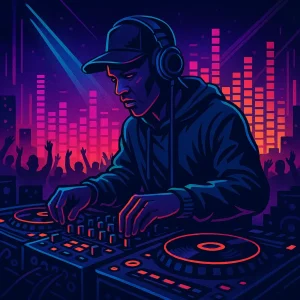What Is Techno Music? Defining the Genre’s Sound and Style
Techno music, with its pulsating rhythms, mechanical textures, and hypnotic energy, is more than just a genre — it’s a cultural revolution. Born in the industrial heart of Detroit in the 1980s, techno fused futuristic imagination with gritty urban reality, combining electronic experimentation with a desire for expression, escape, and connection. Over the decades, techno has evolved into a global movement that continues to redefine the boundaries of electronic music and dance culture.
The Birth of Techno: Detroit’s Blueprint
Techno music originated in Detroit, Michigan, during the early 1980s. In a city grappling with industrial decline, a group of young African American musicians — Juan Atkins, Derrick May, and Kevin Saunderson — began creating music inspired by the mechanical environment around them. Influenced by Kraftwerk, Afrofuturism, and funk, their sound combined robotic beats with futuristic themes.
Atkins, often dubbed the “originator” of techno, coined the term based on his love of technology and science fiction. His work with Cybotron and tracks like “Clear” laid the foundations of what we now know as Detroit techno.
The Sound and Aesthetic of Techno
Early techno was minimal and rhythm-driven — focused on repetition, atmosphere, and raw emotion. It was built on synthetic sounds and designed for the dance floor. Unlike vocal-heavy genres, techno used loops and textures to create a hypnotic effect, allowing dancers to lose themselves in sound. The genre spoke to themes of industrialization, alienation, and futuristic hope.
The European Explosion: Berlin and Beyond
Techno’s popularity exploded in Europe in the late ’80s and early ’90s. After the fall of the Berlin Wall, abandoned warehouses became breeding grounds for underground raves. Berlin techno culture was therefore born. Clubs like Tresor and Berghain became global icons.
As European producers like Jeff Mills, Richie Hawtin, and Ben Klock entered the scene, techno evolved into subgenres like acid techno, minimal techno, and industrial techno. Labels such as Warp, Drumcode, and Ostgut Ton helped globalize the sound.
Modern Techno: A Living Legacy
Today, techno music continues to evolve. Artists experiment with modular synthesis, ambient influences, and AI-generated soundscapes. Techno thrives in festivals like Awakenings, Time Warp, and Movement Detroit, while underground scenes in cities like Amsterdam, London, and São Paulo keep the genre deeply rooted in its raw, rebellious spirit.
Its influence now extends beyond music — into fashion, art, virtual reality experiences, and even wellness (like sound therapy and ambient techno playlists).
Conclusion: The Techno Revolution Lives On
Techno’s journey — from abandoned warehouses in Detroit to the stages of Europe’s largest festivals — is a testament to its cultural power. As a fusion of machine beats and human movement, it embodies our complex relationship with technology, creativity, and freedom. Whether heard in an underground club or on a global stream, techno music remains a revolutionary force — timeless, boundary-breaking, and profoundly human.
